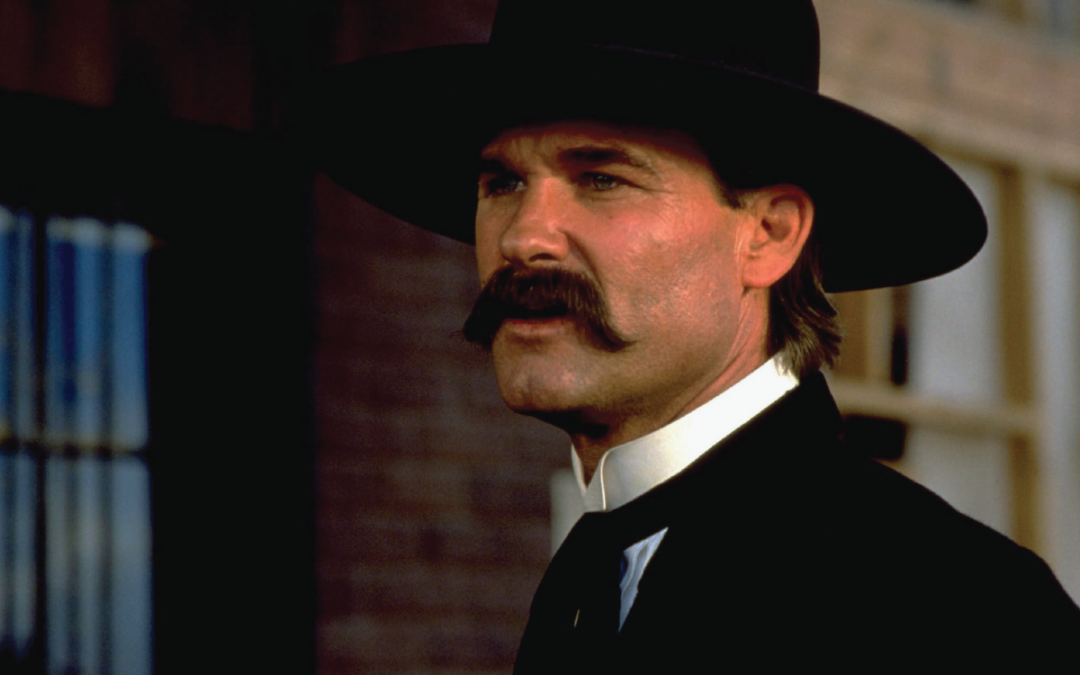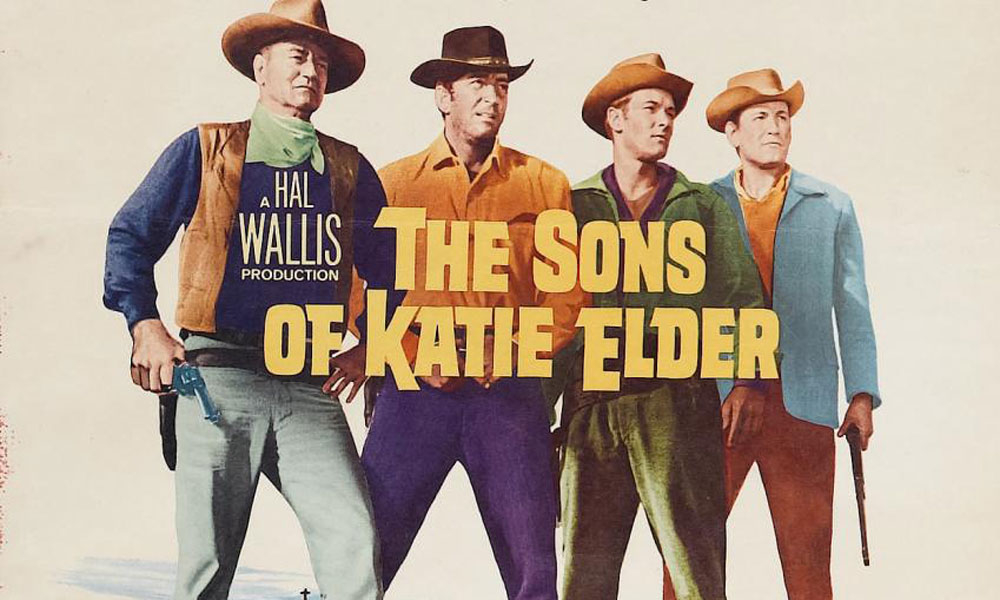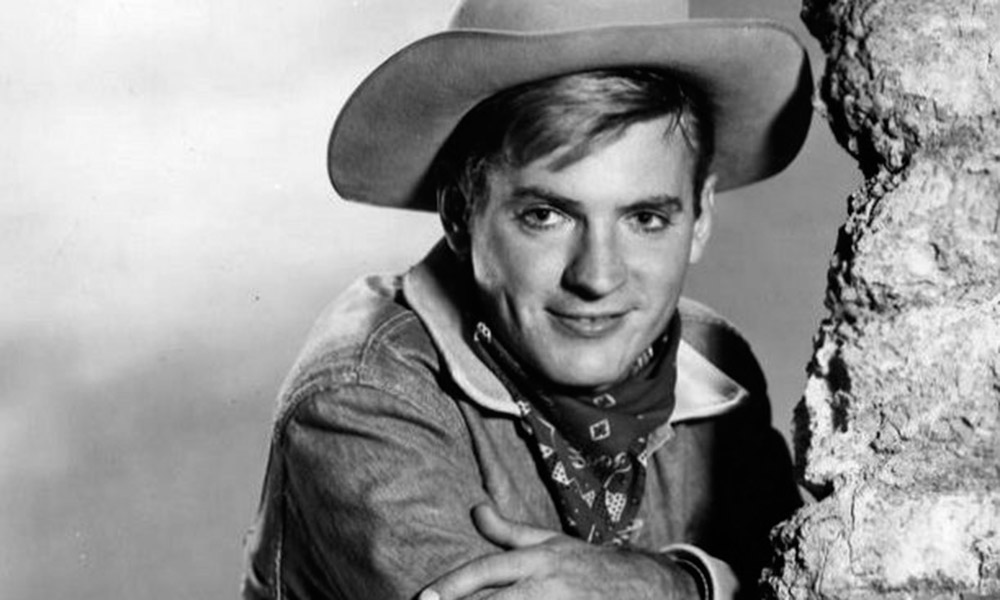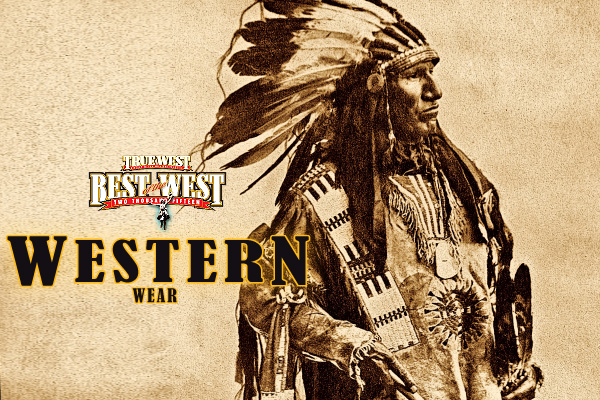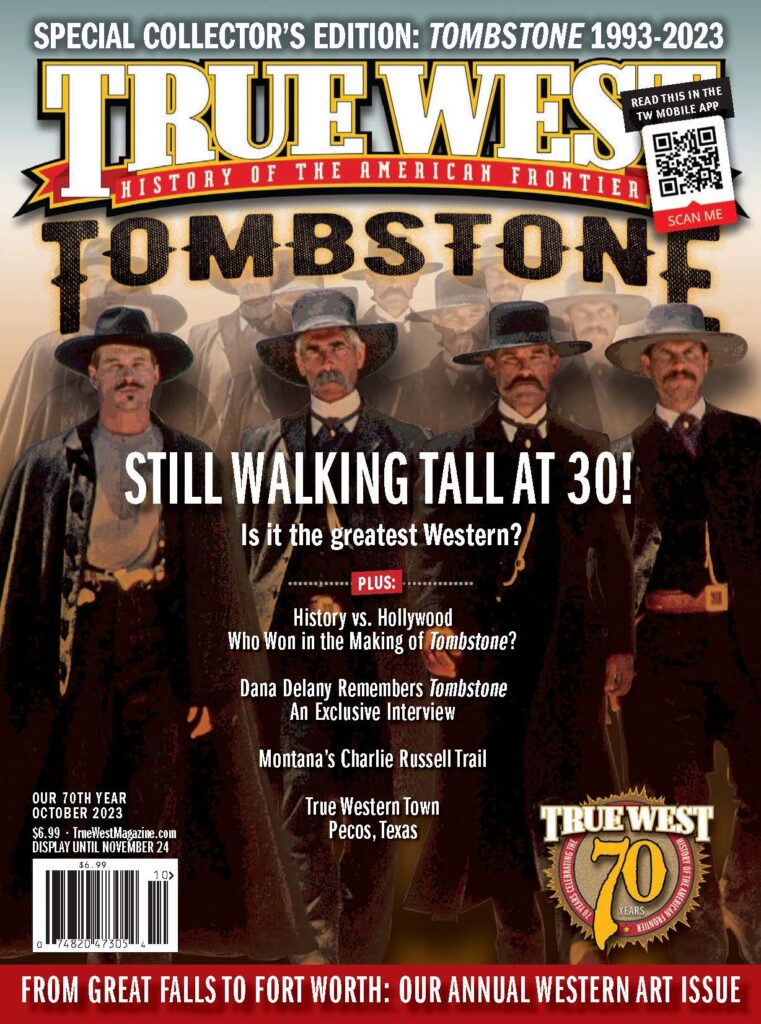Kurt Russell spills the beans.
It didn’t surprise me that Kurt Russell was willing to go off topic during our interview.
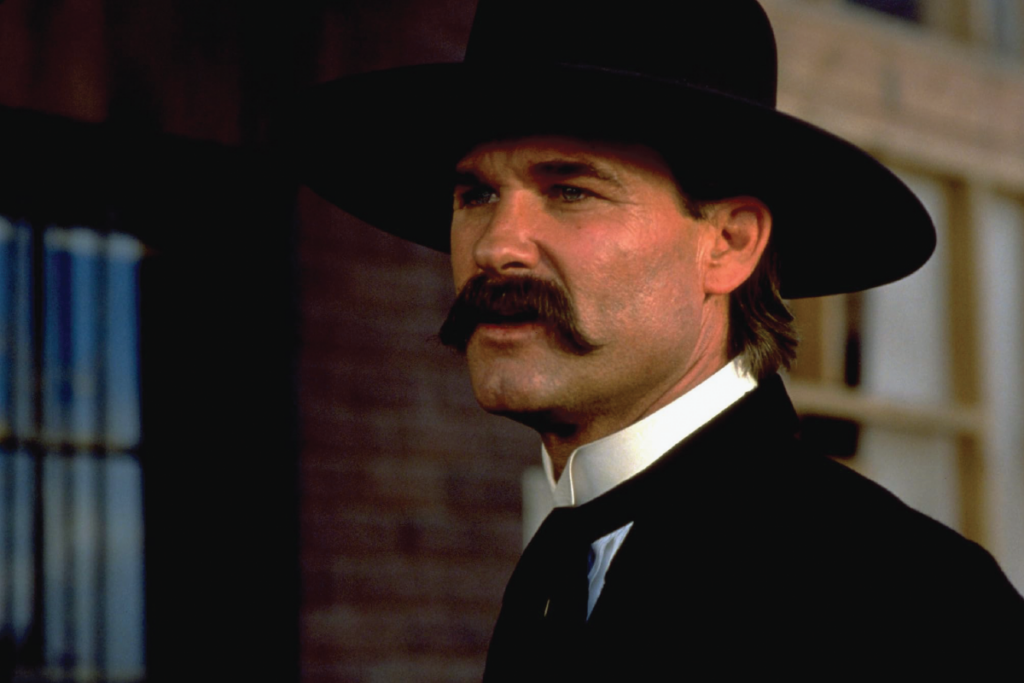
After all, it was the end of the day and he was likely tired of telling the same handful of anecdotes about Poseidon; about nearly drowning during the production, about accidentally putting a hole in Josh Lucas’s scalp, about peeing in the tank.
And Russell loves to talk—I learned that 10 years ago when we wasted most of my interview time arguing libertarianism and Jeffersonian democratic principles when we were supposed to be discussing Snake Plissken and Escape from L.A.
What did surprise me was how eager Russell was to talk about the movie Tombstone. As soon as I mentioned the famously troubled production of the beloved Western, Russell lit up and began to go into unprecedented detail about the who’s, what’s and why’s.
Actually, surprise is too gentle a word; shocked is more like it.
The fact is, while rumors have circulated about precisely what happened when screenwriter Kevin Jarre was fired as director, early in the production, and was replaced by Rambo 2 director George Cosmatos, the cast and crew have been very close to the vest about specifics. Since the film was released in 1993, the shroud of silence concerning the picture has rarely afforded anyone much more than a glimpse of the real story, for reasons Russell at last made clear in a 20-minute conversation that took place in a suite of the Regent Beverly Wilshire Hotel in Los Angeles.
Russell also discussed Kevin Costner’s role in the production, both before the movie started and after the picture was wrapped, details of the financing and distribution, certain curious casting considerations and the legendary missing footage that Tombstone lovers have been dreaming of seeing for 13 years.
Henry Cabot Beck: The Tombstone scholars, Allen Barra, Bob Boze Bell and those guys, are getting together in Tombstone in October 2006 for the 125th anniversary of the O.K. Corral gunfight.
Kurt Russell: Are they? That’ll be fun.
At one time I really knew about Wyatt Earp because that movie—Tombstone is one that’s actually worth talking about—that was the one time I had gone out and got the money. I backed the director; the director got fired, so we brought in a guy to be a ghost director. They wanted me to take over the movie. I said, “I’ll do it, but I don’t want to put my name on it. I don’t want to be the guy.”
I said to George [Cosmatos], “I’m going to give you a shot list every night, and that’s what’s going to be.” I’d go to George’s room, give him the shot list for the next day, that was the deal. “George, I don’t want any arguments. This is what it is. This is what the job is.”
“Yeah, absolutely.”
I got him from Sly Stallone—called up Sly, said I need a guy. Sly did the same thing with Rambo 2 with George. And I said to George, “While you’re alive George, I won’t say a goddamn thing.” [Cosmatos died April 19, 2005.]
And it was the hardest work of my life. Tombstone was so painful. Tombstone was so tough, you know what I mean? It was just so painful; it was hard physically to do—I got four hours sleep every night. And I’m so happy that we got it made.
I didn’t get a chance to edit the movie, which I thought was unfortunate because it could have been one of the greatest Westerns ever, ever, ever made. And it’s pretty damn good. We had a great cast. A phenomenal script.
Some of the direction is terrific. There are great shots—especially the crane shot over Curly Bill [Powers Boothe] when he exits the opium den—
That’s actually how good the script is. That shot is, there’s no way not to do that shot. The movie demands it. The script demands it. But what’s bad about that shot, if you look at it, is it’s badly timed. We had no money. BANG! Half an hour later, the light breaks on the gunshot—Cut. Print it. Go on, move on. But it works.
There’s a lot of great stuff in Tombstone. Great actors who were in a very difficult situation, who I bought their trust by cutting myself out of the movie—as an actor. There’s stuff in that original script that if you were ever to read it you’d go, “Oh ho ho.”
We needed to lose 20 pages. Kevin would never lose the 20 pages. He would never lose it. So once he was gone, there’s only one way I’m going to get the trust of these actors and that is to cut myself out of this goddamn movie and make some changes; make Wyatt an “aura” character.
Aura?
In other words, you meet him, you see him, you know who he is. When you see him step off the train, that’s it. There’s the guy. And then Doc Holliday fleshes him out. I said, “You’re going to have all the acting stuff to do in this movie, and I’m going to make sure it gets done.” And I saved most of everybody else’s stuff to do. Because, in fact, I could do that with Wyatt—I knew the script extremely well—and I could do that with Wyatt because I was going to play him.
I knew what I needed from the character in terms of the movie, in terms of making the movie work. But it wasn’t fun to do that; it wasn’t fun to cut out eight of the reasons you wanted to do the movie.
I was very disappointed with Kevin. I told Kevin he was going to get fired. I said, “It’s not working, and they’re going to come in here and can you,” and they did. It was a bad experience in that regard, but it was a great—Tombstone mattered. [The drama] doesn’t matter—all movies have their life. Some are easy, and some are not (laughs).
Troubled movies are usually crap, but Tombstone comes out of all that smelling like a rose.
It was really hard. Plus, I was doing it all on the sly. George and I had sign language going on.
But you got along.
Oh yeah. Very well. You had to. And he was terrific in selecting locations. But one day I came out there and the whole street is backwards. And EPK [Electronic Press Kit Production, i.e., documentary filmmakers] is out there that day, so I come out there and I say, “George, look at that.” And he said, “Ooh,” and he had to turn it all around. But he was very good at selecting locations, and he did what he was supposed to do.
Was it all shot in Old Tucson?
Old Tucson, Mesquite [Dennis Liddiard, Russell’s long-time makeup man, pipes up from the other room: “Mescal.”]—is that what it was? Mescal?
You want to talk about a book that I could write—I said, “George, as long as you’re alive, I’m not going to say a goddamn thing.” But I could’ve cared less. All I cared about was the fact that the movie got made.
The picture did surprising business.
It was interesting, ’cause when the movie got released—I read this great article in the L.A. Times about the phenomenon of Tombstone, how the studio was like shocked at what they had—they didn’t know what to do with the movie. It was out there, and they were like, “How are things going with Tombstone?” They didn’t promote it very much, didn’t know what to do with it, didn’t know where it was coming from. “What’s happening here?”
It was a Western. A Western! They didn’t know anything. And it wasn’t their baby. I’d gone and got 25 million dollars from Andy Vajna to make the movie. Andy and I had been on a bicycle trip, that’s where the relationship came from. A bicycle trip we did a couple of years earlier. He said, “If you ever have a project….” I said “Fine.”
And my old agent at William Morris, I left my old agent—do you remember when that shit was going down?—and I was the last one to leave, actually. And I was over at CAA and a couple of years later, ’89, and my old agent called me up one day: “There’s a script that I’m aware of, that you should do. But,” he said, “there’s a lot of politics involved here.”
Politics?
At that time, Jarre and Costner were going to do the movie. Then Costner decided he liked the idea of doing, not Tombstone, but Wyatt Earp, with Kasdan writin’ it. And he gave the movie to Kevin with his best wishes. Good luck.
I got the script from my old agent. Jarre was with William Morris. And I thought it was a phenomenal script, and I called and said I wanted to do it, and they said “Ooh”—because Costner was at CAA with Ovitz, and there was the Kasdan project and blah blah blah.
But CAA was great; they got us going. And I went to Andy Vajna and got the money. And I went to my brother-in-law, Larry Franco, who produced a thousand movies, and I asked, “Larry, can I do this for 25 million dollars?” And he looked at it, went through it, semi-budgeted it and said, “Sheee—just. Just.”
At the time, Kevin Jarre was the guy. Kevin was going to direct it. Kevin was such a good writer, it was such a good script, there was no reason not to back it. That was the start of it. And from there, the story just goes—you can’t even imagine. We had one place [Disney/Buena Vista] we could be released.
Willem Dafoe was going to do the movie. Doc Holliday. But Disney wouldn’t release the picture with Willem Dafoe, with him playing Doc Holliday.
There was a time—do you remember Denny [Dennis Liddiard], it was two or three weeks before we started shootin’, and I got a phone call from—I forget who—anyway, I got a phone call, and it was just before Val was going to come on—we had to have a release. Costner had shut down all avenues of release for the picture except for Disney, except for Buena Vista.
How?
He was able to. He was powerful enough at the time, which I always respected. I thought it was good hardball. And that was the story, and some part of it was true, because the only place we were gonna release that picture was through Buena Vista. That much I knew. I was told that by Kevin Jarre. Jarre said, “We’re dead in the water anyplace but Buena Vista.” But he wanted to cast Willem Dafoe, who was absolutely brilliant in his conceptualization of it.
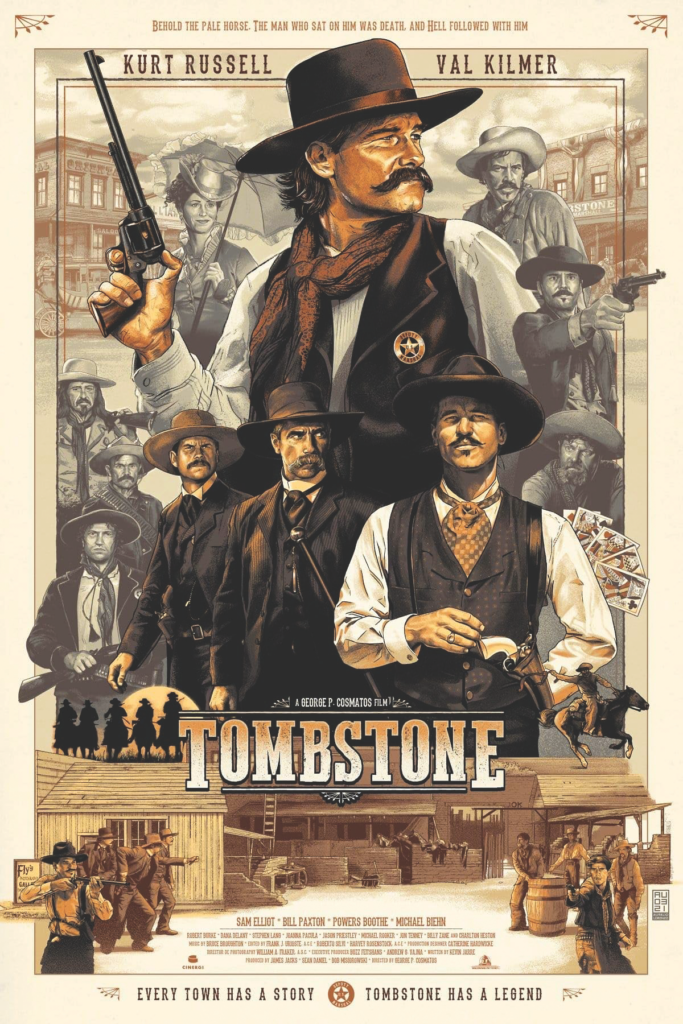
He would have been good.
He would have been phenomenal.
But they came back, told Kevin Jarre, “Nope. You can go with Val Kilmer, but not Dafoe.” So we said, “We love Val Kilmer!” (Laughs) One of those things.
But then Kilmer was great.
Terrific. We spent a lot of time, thank you very much. Best he’s ever been. Yeah (laughs). Wonder why….
What I was going to say about Costner—really interesting—OH! I remember—just before they were going to do the deal with Val, I get a phone
call to go see Andy Vajna, who sits me down, says, “I want you to think about something. What would you think about playing Doc Holliday?”I said, “Oh—that’s interesting. I thought about that when I read the movie, but I think we’re going to go the way we are.” Andy says, “’Cause I was kind of thinking of, what would happen if you played Doc Holliday and Richard Gere played Wyatt Earp?”
(Raucous laughter all around.)
I didn’t know if that was something somebody had come up with that Andy had to consider. I don’t know what it was, but I had to actually sit there, two weeks before we were starting, thinking, “I got to think about a lot of things here. Man, this is not right—(laughs).”
I said, “Nahh, I think we should just do what we got. Make the movie.” But that’s great history. Maybe I would have said, “Sure,” and I would’ve, like, got hit by a truck. And Willem Dafoe would have been back, and it would have been Willem Dafoe and Richard Gere (huge laughs). Who knows? The world’s crazy! You never know.
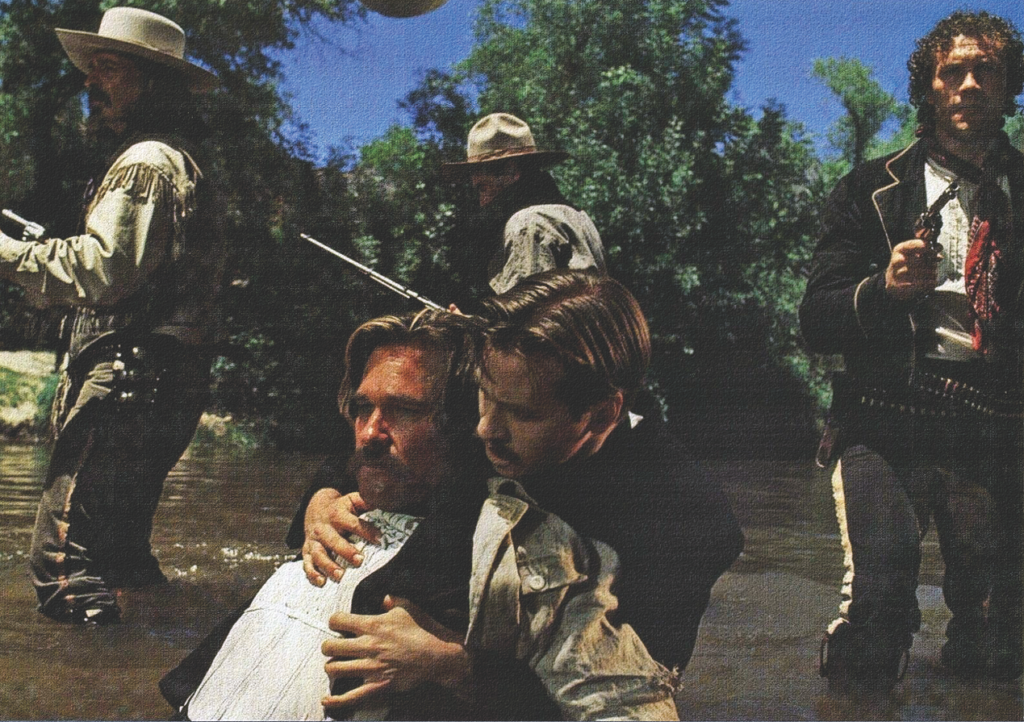
What about the Jarre footage and all the cut parts people have been talking about?
The shame about Tombstone, that you can’t possibly appreciate, although Andy Vajna did give me the tape of everything on the movie, to, whenever I wanted to, to reconstruct the movie. The movie, what you saw, okay, is that movie. The movie is The Godfather—
a Western Godfather. That’s how different that movie is from the one you saw.
So why don’t you reconstruct it?
’Cause I got a life. Someday I may do it. But I’d need to go back to the script, back to all my notes, have to find my notes—You know what I found the other day?—’cause I’m movin’ stuff—I found the last scene I wrote, the scene between Wyatt and Doc. The hospital scene.
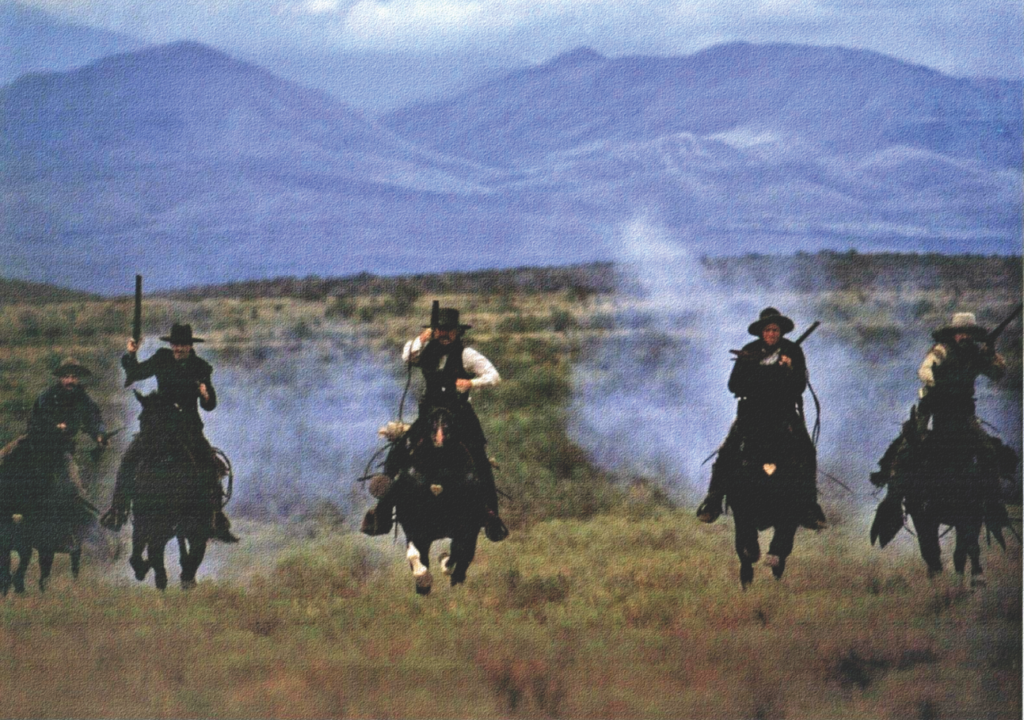
“This is funny.”
“This is funny.” There was a great scene written by Kevin Jarre for that, but because of the things we’d done, I was trying to lead to a different ending.
As the interview was concluding, and Russell’s people were frantically trying to pry him away so that he could attend some evening event, I mentioned that some edited footage of the movie is supposed to be shown in Tombstone in October.
Russell responded: “Well, I don’t know what they’ve got, but all that stuff is put away in my garage, including an interesting scene that shows a deeper relationship between Wyatt Earp and the cowboys. Who knows?—maybe sometime….”
Henry Cabot Beck is True West’s former film and television editor.

